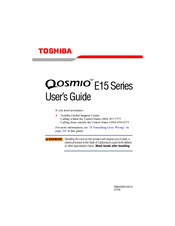Toshiba Qosmio E15 Series Manuals
Manuals and User Guides for Toshiba Qosmio E15 Series. We have 1 Toshiba Qosmio E15 Series manual available for free PDF download: User Manual
Advertisement
Advertisement
